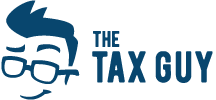Wages or Dividends
 The most common question we get from business owners is “Should I pay myself in dividends or wages?”
The most common question we get from business owners is “Should I pay myself in dividends or wages?”
Unfortunately, the answer is different for everyone.
The first thing we recommend is to minimize the amount of money you draw out in the first place. The main advantages of incorporating come from accumulating profits in the company account.
Realistically though, everyone has living expenses and needs to pay themselves something so we need to figure out the most tax-friendly way to get some of those profits from the company to the owner. We have seen that many accountants will call all of your draws a dividend, and close the books. This is simple easy and requires very little planning or forethought. While this may be the best strategy for you, there are other options.
What’s the difference?
- Dividends are a portion of the profits of the company that are paid to the owners.
- Wages paid to employees (including owners) are deductions from the company’s taxable income, resulting in lower profits and a lower corporate tax bill.
Advantages to paying yourself a dividend
- No payroll remittances: If you have no employee wages, you will not have to make payments to CRA each month.
- No CPP premiums: If you pay yourself wages, you will end up paying an additional 9.9% to CRA for Canada Pension Plan. Dividends are not subject to CPP premiums.
- Lower personal tax bill: Since dividends are paid out of after-tax profits, the personal tax liability will be much lower – and can be zero in many cases.
- Income splitting: If you have a spouse or adult children who are shareholders of the corporation, dividends can be used to split income between members of the household. If each shareholder owns a separate class of shares, the dividends can be paid in any amount to each person.
- Note: The federal government is looking into ways to limit this “dividend sprinkling” but for now it is still a viable option.
Advantages to paying yourself a salary
- Lower corporate tax bill: Since wages are directly deducted from corporate profits, the corporation will save in federal and provincial taxes.
- Future CPP benefits: Since you are paying the CPP benefits on your wages now, you will be building up the CPP benefits you will ultimately receive on retirement.
- RRSP contribution room: In addition to increasing CPP benefits, your wages build up RRSP contribution room which allows you even more options to save for retirement.
- Childcare expenses: If you pay for childcare, these expenses can be deducted from wages but not dividends.
- Increased government benefits: The way dividends are reported on your tax return artificially inflates your Net Income line. This number is used to calculate the GST Credit, Canada Child Benefit, Old Age Security, and many other benefits. So, if you report your draws as wages, you may also qualify for larger benefit cheques.
Conclusion
The answer is different for each person. We can plan your compensation for your current and future needs and make sure that you are paying keeping more money in your hands instead of going to CRA.
Posted in: Corporations
Leave a Comment (0) ↓